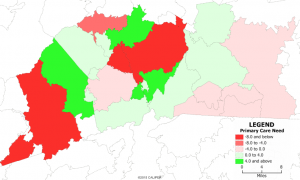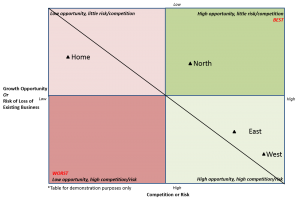An effective geographic growth strategy is critical to the long-term sustainability of hospitals and health systems. Healthcare Strategy Group has established five key strategic considerations for evaluating new or existing markets for geographic expansion.

Market Attractiveness
Market “attractiveness” can quickly differentiate service areas. Factors such as population size, population growth, household income, and percentage of residents with private insurance can provide valuable directional support for initial markets to explore for expansion opportunities.

Drive Time and Travel Patterns
Drive time to a hospital facility or primary care practice is beneficial in evaluating patient access to care. Exploring high volume traffic areas, resident travel patterns, and tertiary orientation in specific markets offers guidance for areas of expansion and potential physician practice or ambulatory care locations.

Primary Care Physician Need
Primary care need directly impacts your organization’s ability to build and sustain a significant patient base in a market. Markets with a strong primary care need and the ability to draw additional volume from surrounding locations may be ideal for geographic expansion.
Market Share
Inpatient and outpatient market share analysis can classify service areas based on greatest market change (positive or negative), potential growth opportunities, and overall market competitiveness. It can help you determine:
- What market share your organization is losing that you feel you have a right to
- Whether you will continue losing market share in a particular area unless you act quickly and expand your presence
- Which market offers the greatest opportunity for increasing your share

Risk vs. Reward
Analyze and prioritize potential expansion areas based on growth opportunity vs. the risk of entry and competition level in each market. Plotting entry risk verse growth opportunity for each market will simplify differentiation of markets.
Ultimately, an internal risk assessment will be one of the most critical decision-making points of the growth strategy planning process. Growth decisions can range from build-up of current campus with the intent to draw additional patients to the main hospital, to establishing a new presence in a long-term competitor’s backyard to compete for existing share.

